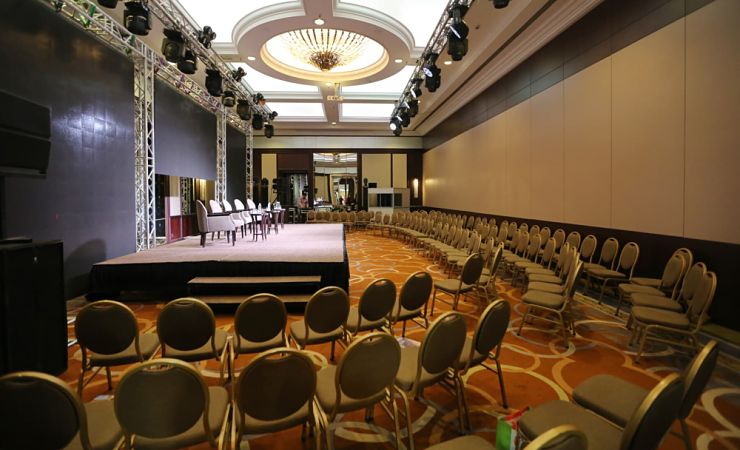An Introvert’s Guide to Academic Networking and Hybrid Events

I hesitate to use the term ‘networking.’ There are few words that so reliably provoke an ambivalent reaction amongst academics. It is difficult to deny that collaborators, interlocutors and colleagues play a central role in our careers. Similarly, it is difficult to be an academic without having experienced being ‘networked’ as a means to someone else’s end. As Jana Bacevic observed, this instrumentalized socializing combines two elements, instrumentalism and socializing. For an introvert (such as myself), both can be uncomfortable. However, the pandemic has led to a lasting shift in how academics come together, formally, informally, or otherwise, which we must understand if we hope to work collaboratively.
Hybrid working tends to mean more time spent at home as well as the de-synchronization of time spent in the office. The point can be overstated, remote working by academics long predates the pandemic, but the change remains significant. Alongside the continued use of Zoom for departmental meetings (often for the better) the space for spontaneous interaction feels smaller, with different implications for those new to an institution and those who have long been embedded within it. Obviously, there are ways around this, but they require more planning. Fortunately, I work in a friendly department with many initiatives like this. Yet, they struggle to replicate the unplanned and ad hoc forms of face-to-face interaction which used to be part of my academic life.

A similar shift is underway with events and conferences. I suggested last year that an upsurge in hybrid events was a precursor to a return to the old normal of face-to-face conferences, a prediction partly borne out by an increasing number of large conferences returning to entirely physical meetings. The landscape of workshops, seminars and symposia is more mixed, but it seems likely we will inhabit a hybrid landscape that includes far more purely online and hybrid modes than was the case before the pandemic. This might seem like the best outcome from the perspective of academic sociality, in that it provides a range of options through which scholars can meet others who share their interests. It also retains the accessibility the online pivot afforded by enabling those who can’t or won’t travel to participate remotely, while enabling the face-to-face interaction that many reported missing during the pandemic.
However, it matters who will be attending in person and joining remotely. Consider the factors likely to shape a willingness and/or ability to attend events in person e.g. caring responsibilities, immigration status, disability and access to funding. It is also widely reported that there is a quality to networking in person that simply cannot be replicated online. There are reasons to be cautious about this assumption, given it rests on a comparison between long-practiced formats for physical and the relative novelty of online meetings. We should nonetheless be mindful about a two-tier academic citizenship emerging in which certain modes of building a professional network are restricted to a subset of academics.
There is no inherent reason why hybrid participation is necessarily inferior in terms of building connections with other people. But, it is important to be realistic about the infrastructure which most academics have available for these purposes. For example, the difference between the HBX Live Studio at Harvard and the facilities available to most academics for hybrid teaching. It is much easier to ensure social presence when the infrastructure is adequate to the task and this has enormous implications for the possibility of making and deepening professional connections. This includes technical support to ensure the equipment works adequately and problems can be addressed. While hybrid participation has improved since the days of being a laptop placed on a desk in a room full of people who are otherwise physically present, it still feels like there is a long way to go until there an equivalent sense of presence can be reliably achieved. My suggestion is that these changes mean we have to rethink what ‘networking’ looks like in practice. This can be a positive thing, at least for introverts like myself, who have never much enjoyed mingling after a session and tend to skip the conference dinner. As someone who has also benefited greatly from more online forms of connection, I suggest the following four strategies, which we can take as individuals to help ensure opportunities to build and expand networks within this changing landscape.
1. If you are not attending physical events your digital presence becomes a crucial component of building networks. This requires being active on social media, but in a way that promotes conversation with others who share your interests. What matters is the quality, rather than the quantity of your interactions. This means communicating what you are interested in through your bio and through the material you share. If you talk openly and expressively about the things you are reading, thinking about and preoccupied with, then these platforms can be powerful mechanisms for establishing connections. Ensure you have at least a basic web presence which provides information about what you do, ideally in a narrative form which brings your intellectual passions to life.
2. Try to develop an openness to collaborating with people you have not met. This involves moving from social media to video conferencing or platforms like Slack. How these transitions work will vary immensely and can sometimes be socially complex in a way comparable to face-to-face interaction. But, if you are using social media in an active way then you will invariably encounter others who share your research interests with whom you might co-author or co-organize. This can feel unfamiliar at first, but it quickly becomes second nature. In fact, the problem many people experience when they become comfortable with finding collaborators through social media is there are too many potential projects. This means it is important to have a clear sense of what you want to work on and a wider sense of what you might want to work on.
3. Ensure you are taking advantage of the potential for interaction when participating remotely. Talk to other hybrid participants in the Zoom chat, join any networking events offered and tweet about the event if this is appropriate. The conference hashtag is more important than ever in this new hybrid landscape, even if live tweeting has fallen out of fashion. It can be useful to take what steps you can to ensure the clarity of your audio and video (e.g. a secondary microphone can do wonders for your audio quality relative to the internal microphone within most computers).
4. Explore opportunities to build intellectual communities on a local level, within and beyond your institution. There is no reason these need to take the form of traditional conferences, seminars and workshops with all the costs these entail. The key thing is finding ways to meet and engage with others who share your interests, including creating these spaces if you find they are not available. It can be hard to make the time for things like reading groups alongside many other professional responsibilities, but more informal events can play a crucial role in creating opportunities for building and extending professional networks.




























































































